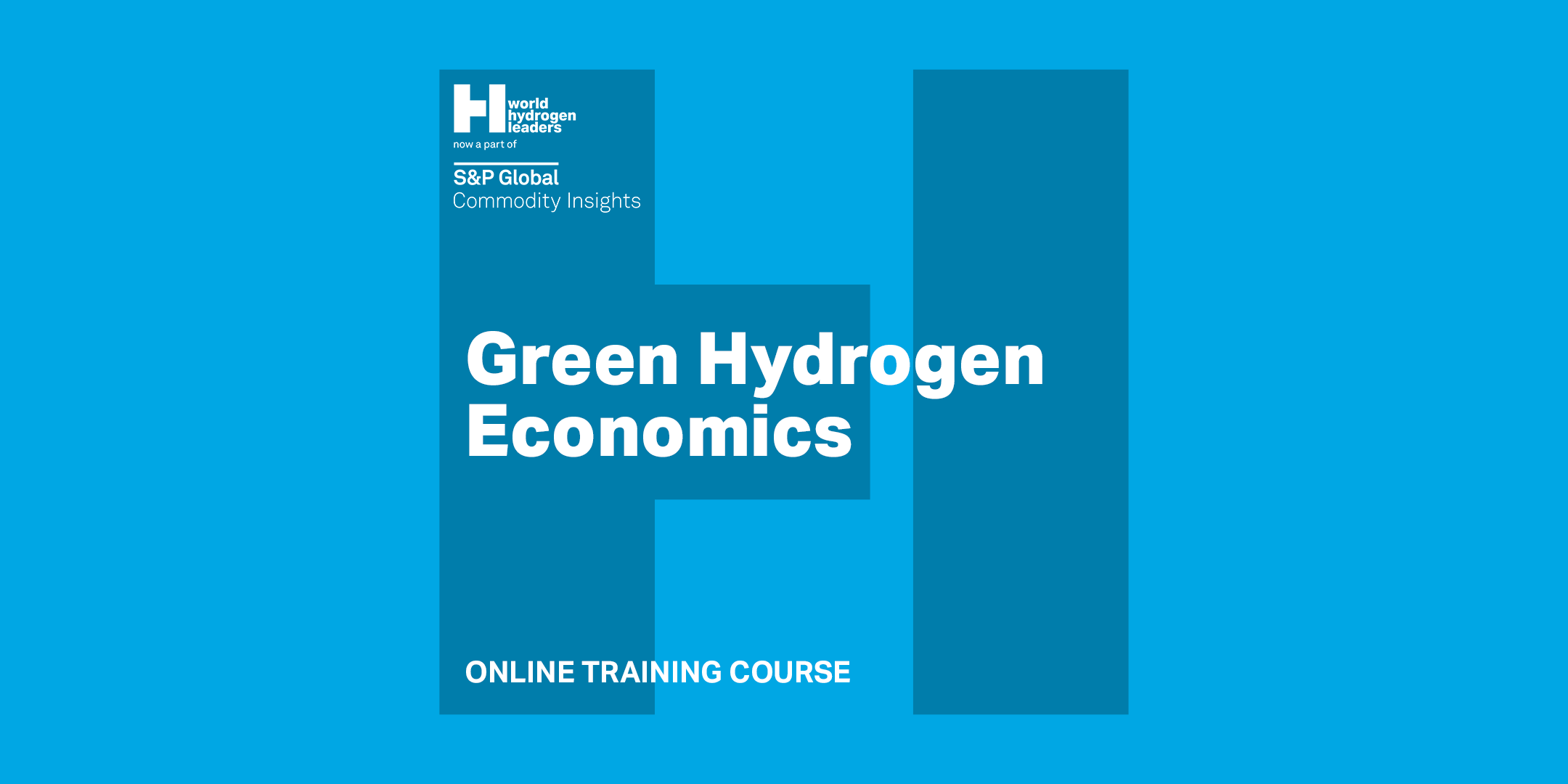Secure your place
Examining and quantifying the key variables that determine the costs of green hydrogen production, and the potential project returns
This course is designed to give a clear examination of the factors that will determine the economics and competitiveness of hydrogen produced by electrolysis.
It will examine economics from both a simple levelised cost and from a more comprehensive project financial modelling perspective, assessing the impacts of factors such as capital cost reductions, electrolyser efficiency, load factor, co-product sales and financing costs.
There will also be consideration of how the key aspects of electricity input costs and policy support mechanisms can change the economics of green hydrogen production. This will include both projects directly connected to a renewable power plant and those connected through or ‘topping up’ via the wider grid.
In addition to considering market trends and presentation of key concepts, the sensitivity of green hydrogen economics will be quantified by use of numerical models (in Excel).
Course Objectives:
Understand which key variables impact the economics of green hydrogen
Calculate the levelised cost of hydrogen production (LCOH), including sensitivity to key inputs
Assess what market trends and forecasts indicate about the key economic variables
Analyse a more comprehensive project financial model, and comparison with simple LCOH
Understand how different policy mechanisms enhance the business case for green hydrogen
Quantify the sensitivity of project returns to different project variables
Examine the drivers, both policy and market dependent, of electricity input costs
Assess the impact of clean hydrogen standards on the economics of green hydrogen
This Course Includes:
Access to all three sessions each lasting approximately three hours
Interactive format with dedicated Q&A sections with the trainer
Flexible access on any device
A certificate of attendance after full completion of the course
Agenda
Attend live. Each session includes dedicated Q&A sections throughout.
Session 1: 22nd April, 14:00 - 17:00 CEST
The essential green hydrogen economic variables, and LCOH
The inputs and outputs of a green hydrogen project
An essential businessperson’s guide to the most common units, measures and metrics
How much output for how much input?
Defining electrolyser capacity, vs. project energy requirements
Balance of system components and loads
The economics of different technologies, including the potential impact of emerging ones
A simple ‘levelised’ approach to the assessment of green hydrogen production costs
Methodologies for LCOH
The advantages of a simple LCOH approach for understanding key variables
Illustration of sensitivity of LCOH to changing variables, using a simple Excel model
What LCOH tells us about future cost reduction in hydrogen supply
The limitations of an LCOH approach
Session 2: 23rd April, 14:00 - 17:00 CEST
The impact of market trends and policy supports
The price of renewable power (& other key trends)
Power costs vs. prices, including levelised costs of energy (LCOEs) vs. market and PPA prices
Trends and data on renewable power costs and prices
Wholesale electricity: market price determinants and trends
Mixing renewable power and grid power (pros, cons and trade-offs)
Other key market economic trends, including equipment costs and performance
Policy supports and requirements for green hydrogen production
The role of clean hydrogen standards in green hydrogen economics
Comparing and contrasting current approaches to clean hydrogen standards
Other policy support mechanisms, including revenue subsidy models and tax credits
Direct connected vs. ‘virtual’ projects
Policy risk and uncertainty for green hydrogen developers
Session 3: 24th April, 14:00 - 17:00 CEST
Green hydrogen economics from a project finance perspective
Examining a project financial model for green hydrogen
Presenting a template cash flow analysis for a green hydrogen project
Key differences compared to the simple LCOH analysis
The impact of additional aspects such as financing structure and project returns (IRR)
Sensitivity analysis (inputs vs. returns)
The customer influence: off-takers and their requirements
Green hydrogen economic opportunities and risks
The importance of timescales and whether they match (e.g. power purchase agreements, hydrogen purchase agreements and subsidies)
What happens when a subsidy scheme ends?
Illustrating current and future policy impacts on potential project returns
What might be realistic levels of green hydrogen production cost in future?
Identifying gaps in the analysis and the key information needs for deeper economic analyses
Meet the Trainer
Dr John Massey is Managing Director of Grey Cells Energy Ltd., where he conducts independent market assessment and opportunity/risk analysis for clean energy technologies. He delivers market briefings, oneto- one coaching and training courses worldwide, both online and in-person, along with strategy and business plan consulting to help companies (particularly SMEs) position themselves to best grasp new low-carbon market opportunities.
In addition to delivering training globally under his “Grey Cells Energy” brand, John is a co-founder of Astute New Energy, helping firms to navigate the changing power sector through business, strategy and stakeholder communication advisory work.
What Attendees Are Saying
“It was a good overview on the basic concepts of hydrogen and also the latest technology available.”
“The trainer was very knowledgeable in the area of services that are required by a renewable network.”


